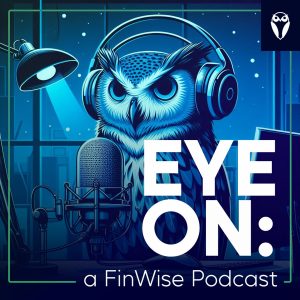Simon Darchis, SVP, Head of Fintech Products and Strategic Initiatives at FinWise Bank
For decades, the FICO score has been the gatekeeper to financial opportunity—determining who qualifies for a loan, at what price, and on what terms. Yet, as the fintech landscape evolves, it’s clear that the future of lending is being built on a richer, more nuanced understanding of consumers.
Today’s lenders are moving beyond snapshots to assemble a mosaic—a multidimensional picture of each borrower. This shift is powered by new technologies, diverse data streams, and a growing commitment to ethical engagement, especially for those outside the traditional credit system.
Moving Beyond FICO.
Millions of Americans—often called “credit invisibles”—lack the lengthy credit histories needed for reliable bureau scores. These individuals may have steady incomes, college degrees, and even own homes, but volatile incomes and limited savings make them vulnerable to unexpected expenses. Traditional metrics often miss this nuance.
Forward-thinking institutions like FinWise and their partners are embracing alternative approaches. One of the most promising is the use of bank transaction data. By analyzing how consumers manage their checking accounts—the rhythm of deposits and withdrawals, recurring bills, and overdraft patterns—lenders gain real-time insight into financial behavior. Research, including a 2021 Federal Reserve study and recent CFPB reports, shows that transaction-level cash flow data can significantly improve the predictive power of credit models compared to bureau data alone.
The Alliance for Financial Inclusion (AFI) highlights how non-traditional data sources—such as utility payments, social media insights, and behavioral patterns—are revolutionizing credit assessment for underserved populations. Regulatory frameworks from 32 AFI member countries are advancing access to finance for those previously excluded from traditional credit systems
The result? Better underwriting and broader inclusion. More borrowers can access loans when they need them most, creating a “prime experience for non-prime consumers.”
Test, Learn, Adapt.
Building smarter models is an ongoing process. The pace of change in consumer credit behavior—accelerated by events like the COVID-19 pandemic and the resumption of student loan payments—demands constant recalibration. Leading lenders run automated re-parameterization processes monthly, sometimes weekly, to check for “model decay” and update as needed.
During the pandemic, for example, average credit scores jumped due to stimulus and payment pauses, only to fall again once programs expired. Static models built on stale data would have misread borrower risk. Dynamic recalibration ensured responsible credit extension, even in volatile conditions.
AI in Credit and Fraud Modeling.
Artificial intelligence is accelerating credit modeling, enabling systems to ingest thousands of data points and flag anomalies in real time. Fraud prevention has been a clear beneficiary, with AI tools detecting subtle behaviors—like multiple loan applications in a day—that would be invisible to human reviewers. According to McKinsey, AI-driven fraud detection could save banks and fintechs billions annually.
However, the “garbage in, garbage out” principle remains. Poor or biased data can lead to poor decisions at scale. That’s why supervised models and transparency are essential—not just for good practice, but to meet regulatory expectations. The CFPB’s 2025 Supervisory Highlights emphasize that there is no “advanced technology” exception to federal consumer financial laws. Institutions must ensure their AI and machine learning models comply with the Equal Credit Opportunity Act (ECOA) and Regulation B, regularly testing for disparate impacts and documenting business needs for their credit scoring models.
Marketing Models: The Other Side of the Coin.
Underwriting is only half the battle. Marketing models help lenders reach the right consumers at the right time, balancing efficiency with ethics. For non-prime borrowers, emergencies drive much of the demand for credit. Data helps identify patterns, and direct mail remains a powerful channel in the subprime space, even as digital platforms grow.
Yet, ethical questions loom. Targeting financially vulnerable customers with firm offers of credit can feel like “dangling money” in front of those who may already have struggled. The answer lies in context: compared to alternatives like payday lenders, offering fair, transparent products can be a lifeline. The goal is to provide a prime-like experience that helps borrowers graduate to traditional credit over time.
The Data Access Question.
No discussion of future modeling is complete without addressing data access. In 2025, JPMorgan Chase became the first U.S. bank to charge fintechs and data aggregators for access to customer account data. If this model spreads, the cost of acquiring and underwriting customers could rise, potentially limiting innovation and financial inclusion.
The hope is that fees remain nominal—enough to cover infrastructure, but not high enough to wall off consumers. Otherwise, costs will ultimately be passed on to borrowers, undermining the efficiencies these new models are meant to create.
What comes next?
Looking ahead, three forces may drive the next wave of innovation:
• Revitalized credit bureaus: Modernized infrastructure and cloud capabilities could unlock richer, faster data streams.
• Explosive growth in fraud tools: As fraudsters get more sophisticated, so too will detection engines.
• Mainstream AI adoption: With tools like ChatGPT and Copilot going mainstream, data innovation is accelerating far beyond niche teams of data scientists.
For lenders, the key will be not just building smarter models but ensuring their data foundations are strong enough to support them.
A More Human Future.
Ultimately, credit and marketing models are about people—not just numbers. They’re about creating opportunities for consumers who might otherwise be overlooked, while safeguarding institutions against risk. The goal is simple: say yes to as many customers as possible, responsibly.
That’s the real innovation: blending cutting-edge analytics with a human-centered approach. Beyond the score lies the mosaic—and in that mosaic, the future of lending is already taking shape.
References:
- U.S. Department of the Treasury, “Assessing the Impact of New Entrant Nonbank Firms”.
- CFPB Supervisory Highlights: Advanced Technologies Special Edition, Jan 2025.
- Alliance for Financial Inclusion, “Alternative Data for Credit Scoring”.
- FinWise EYE ON Podcast, Simon Darchis from FinWise Bank and David Peterson from Elevate, July 29, 2025.
Connect with FinWise Bank.
Upcoming 2025 Events
- October 26-29 – Money 20/20 2025 Las Vegas
- November 19-20, 2025 – Fintech Nerdcon Miami
Join us on a FinWise Podcast found here:
 |
 |
 |
|---|

